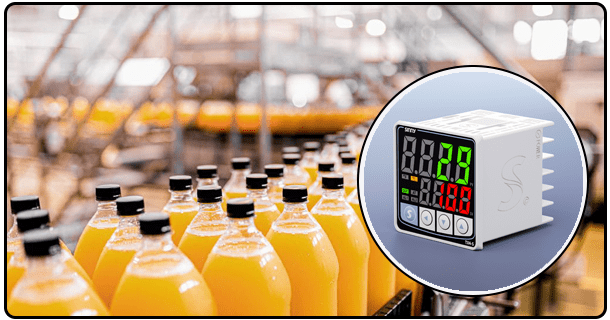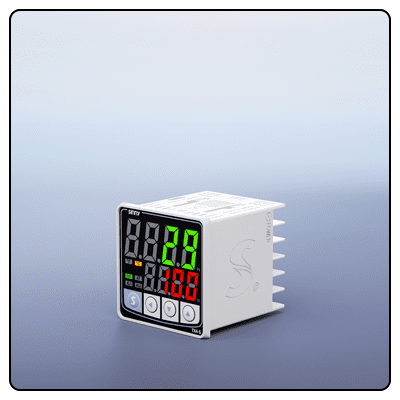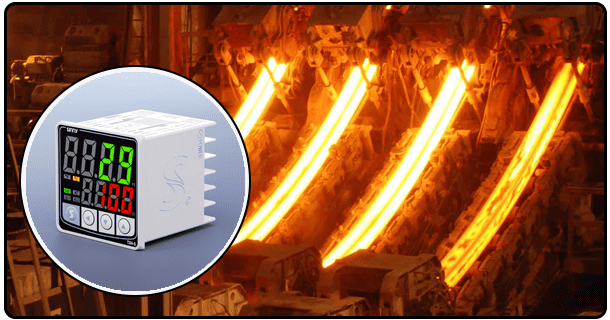How PID Temperature Controller Work?
Discover how PID temperature controllers work with our comprehensive guide. Learn about the components, control mechanisms, tuning methods, and applications of PID temperature controllers for precise and efficient temperature regulation.
1. What Is a PID Temperature Controller?
PID temperature controllers are control loop feedback mechanisms commonly found in industrial control systems. PID stands for Proportional-Integral-Derivative, a mathematical function applied to any difference between setpoint values and process variable values that cause deviation. These controllers automatically apply corrective actions in order to bring process variables back within range, providing optimal performance and efficiency.

2. Components of a PID Temperature Controller
Sensors: Devices such as thermocouples or RTDs measure current temperature. Resistance Temperature Detectors measure current resistance temperature.
Controller Unit: This component receives input from sensors and applies the PID algorithm to determine output.
Actuators: Actuators include devices like heaters or coolers that implement the controller's output to adjust temperature accordingly.
3. How PID Control Works
Proportional Control P: Proportional control produces output directly proportional to any current error values, helping reduce them by adjusting the output accordingly. This also aids in correcting for potential overshoot errors by making output dependent upon error levels.
Integral Control I: Integral control accounts for any accumions over time and reduces residual steady-state errors after applying a proportional response.
Derivative Control D: Derivative control uses past error rates as predictors for future error rates, creating a dampening effect to reduce overshoot and improve system stability.
4. PID Control Loop
A PID control loop continuously adjusts process variables by calculating error values and applying corrections based on proportional, integral, and derivative terms. This ensures the system reacts rapidly to changes while meeting setpoint objectives with minimal oscillations or overshoot.
5. Tuning a PID Temperature Controller
Tuning a PID temperature controller involves selecting optimal values for Kp (proportional gain), Ki (integral gain) and Kd (derivative gain), typically using methods like the Ziegler-Nichols tuning method to achieve the desired response. Tuning must consider responsiveness, stability and minimization of overshoot; accordingly, proper tuning ensures optimal results and provides necessary control in real-world applications.
6. Benefits of Utilizing PID Temperature Controllers
PID temperature controllers offer several advantages, such as precision in process variable control. Stability: PID temperature controllers offer steady operation with minimum oscillations. Mes Versatility: These versatile controllers can be utilized across various applications.
7. Common Applications for PID Temperature Controllers
PID temperature controllers can help maximize energy use by minimizing the frequency and magnitude of corrective actions taken over time, ultimately saving money and resources in energy costs.
8. Applications of PID Temperature Controllers
PID temperature controllers are widely used in industries such as chemical processing, plastic manufacturing, and food production.
Laboratory Equipment: Ensuring precise temperature control during experiments and processes.
HVAC Systems: Ensuring comfortable indoor environments. Household Appliances: This includes ovens and refrigerators.
9. Troubleshooting and Maintenance
Common issues associated with PID temperature controllers include improper tuning, sensor faults and actuator failures. Regular maintenance for such controllers involves testing sensor accuracy, verifying proper actuator function and recalibrating as necessary, while troubleshooting involves identifying issues to ensure optimal performance.
10. Conclusion
PID temperature controllers are indispensable components in many systems that require precise temperature regulation. By taking advantage of proportional, integral, and derivative components, these controllers offer accurate, stable, and efficient temperature regulation, making them indispensable in various applications requiring temperature regulation.
- Top 10 Industrial Applications of Temperature Controllers
- How Does A PID Temperature Controller Work?























